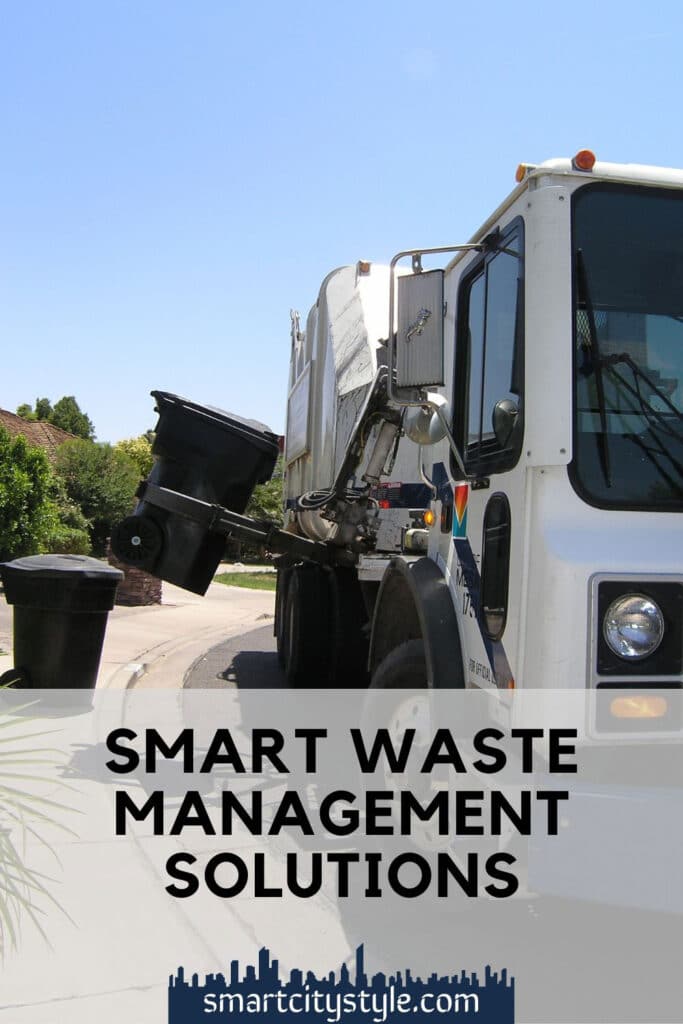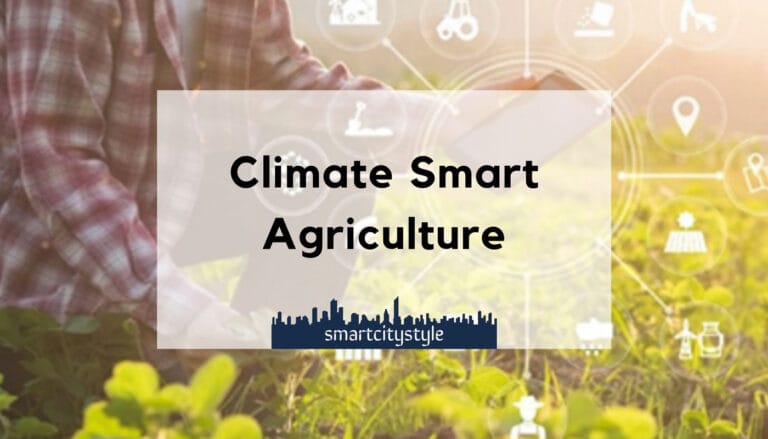Guide to Smart Waste Management – Technologies & Solutions for More Effective Waste Management Regimes
The estimated municipal solid waste or trash generated every single year around the world currently stands at 2.01 billion tons. By 2050, the figure is expected to hit 3.4 billion tons, which is significantly more than twice the projected population growth over the same period.
This global waste trend is alarming, and sadly, the major contributing factors tend to be rapidly on the rise, putting a lot of strain on the environment. Fortunately, waste collection services, as well as municipalities and cities, are adopting smart waste management solutions and technologies to combat and stem the tide of this disturbing trend.
This guide looks at a data-driven approach to waste management, applications of technology in waste collection, and the benefits of smart solutions in the waste industry.
What Is Smart Waste Management?
Smart waste management is any technologically-driven system for handling and collecting trash. In addition to making waste management more efficient, these systems aim to significantly cut down waste management costs and ensure environmentally friendly processes and procedures.
In most cases, the systems are based on the Internet of Things (IoT). This makes it possible to provide and track data on waste management patterns in real-time, optimizing waste collection and allowing stakeholders to make informed decisions. Before the advent of IoT in the waste industry, the waste collection process was mostly inefficient, with pickup systems being either too early or too late.
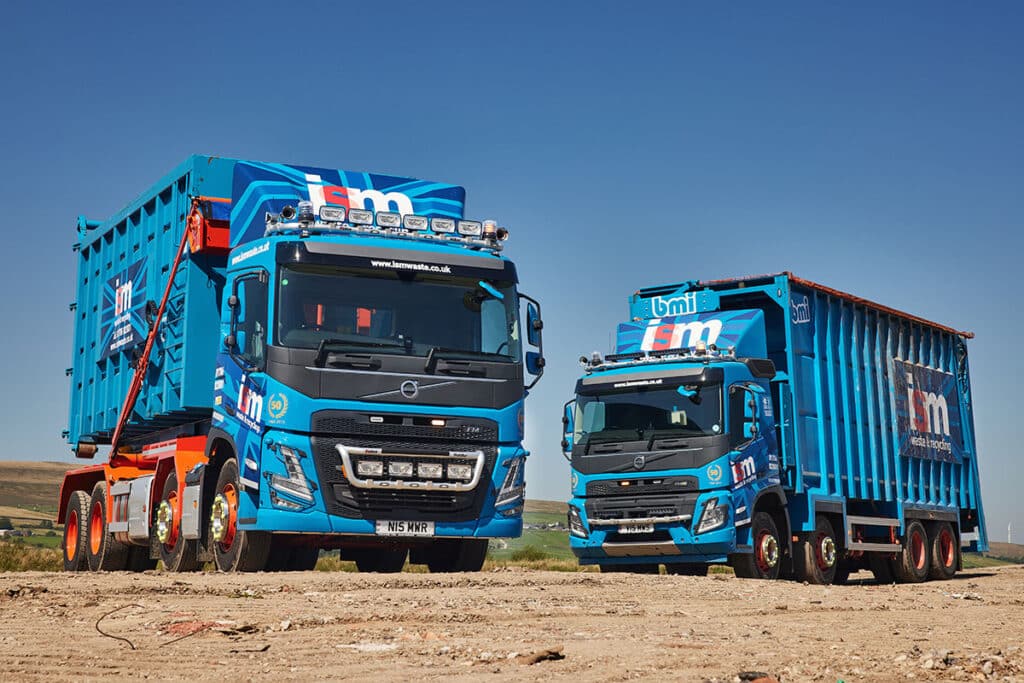
On the one hand, garbage trucks operating on a fixed schedule would empty all waste bins, whether full, half-empty, or completely empty. When waste pickup systems collect waste too early, it translates to expending resources (time, money, and labor) unnecessarily. Also, garbage trucks may obstruct traffic flow on the collection routes, causing congestion. And worst of all, carbon emissions from the trucks will be for no justifiable reason.
On the other hand, late waste collection results in overflowing bins, illegal dumping, and filthy, unhygienic environments. All of these translate to increased health risks, higher collections costs, and increased cleaning (not to mention complaints from residents). Unfortunately, residents are usually left with the burdens of these unnecessary costs.
Traditional systems are unsustainable. A data-driven approach to waste management is more efficient for handling waste collection in a modern world where trash is generated at a substantially increased rate.
The Importance of Smart Waste Management
Urban centers have continued to experience unprecedented rapid population growth and material-focused or consumer culture in recent times. Considering these factors, it is not hard to see why traditional waste management systems can’t cope with the increasing challenges of managing waste effectively and efficiently.
In the United States, only a small amount of recyclable materials (somewhere in the vicinity of 30%) get recycled. Little wonder a large amount of trash end up in landfills, with some disposed of in waterways, leading to water pollution.
There is a need for communities to adopt a more modern, efficient, and cost-effective waste management system to cut back the environmental damage as well as reduce trash collection costs.
Waste collection systems based on modern technologies are the way forward. These systems are cost-effective, sustainable, and capable of handling the amount of municipal solid waste generated by the ever-growing population, especially in urban areas.
As more communities adopt and implement smart waste management technologies and solutions, fewer amounts of trash find their way into waterways and landfills.
The Benefits of Smart Waste Management
Some communities and businesses are turning to innovative waste collection and management driven by IoT technology because of its many benefits. Adopting this innovative waste management solution is a smart move, considering the world is expected to have about 43 megacities by 2030, with each having a population of more than 10 million people.
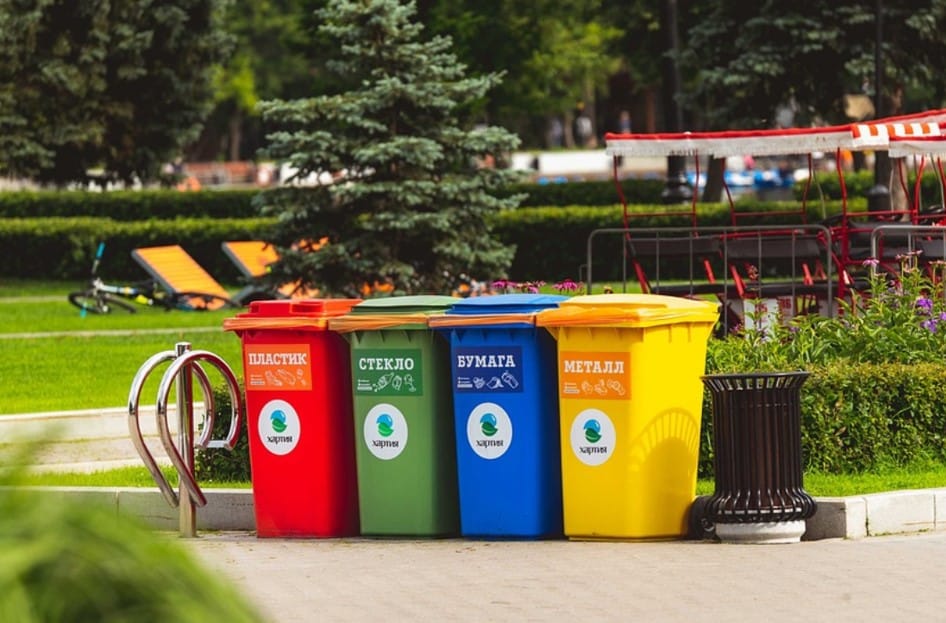
Here are some major benefits of using technology to provide waste management solutions.
Automated Waste Collection
With innovative devices, waste management companies no longer rely on assumptions. Instead, collection services receive real-time alerts regarding the status of their customer’s bins. This way, collectors know exactly when to pick up trash.
Additionally, tools such as advanced disk screeners and optical sorters help make recycling much easier. Mobile apps, in-vehicle monitors, and logistics software also automate and simplify waste collection.
Lower Carbon Emissions
Overflowing is a major issue in urban areas, and while increasing waste collection frequency can curb the challenge, it creates another potentially more devastating problem: carbon emissions. Keeping the streets clean at the expense of public health and negative environmental impact is not only ill-advised but also inefficient.
By switching to data-driven waste management solutions, waste collectors will no longer need to stick to pre-planned schedules, regardless of fill levels. This drastically reduces carbon emissions from garbage trucks.
Reduced Costs
In addition to lowering carbon emissions, waste management driven by technology leads to reduced fuel consumption, decreased labor costs, and less vehicle maintenance. As these funds are freed up, they can be channeled into recycling campaigns and other waste initiatives.
Route Optimization
In a bid to make the waste collection a more eco-friendly task, collection companies use optimization software and advanced systems to ensure optimal routing. This way, the environment is protected from excessive hazardous emissions.
Many waste collection companies now use garbage trucks fitted with robotic arms to avoid unnecessary delays when emptying bins along existing routes. Besides being a more energy-efficient and environmentally friendly waste management practice, optimal routing is also financially viable.
Better Working Environments
Collecting empty bins isn’t the best use of manpower (drivers and waste collectors). By only taking care of dumpsters and bins that require servicing, reducing overflowing, and preventing illegal dumping, smart waste management solutions create a safer and cleaner working environment for garbage collectors. Also, collectors will feel more productive when they actually collect waste rather than empty or half-empty bins.
Better Recycling Rates
While providing recycling bins in public places is a good move, it doesn’t make recycling any easier, nor does it increase participation levels. Thankfully, companies now have access to data that they can use to measure recycling habits and promote participation.
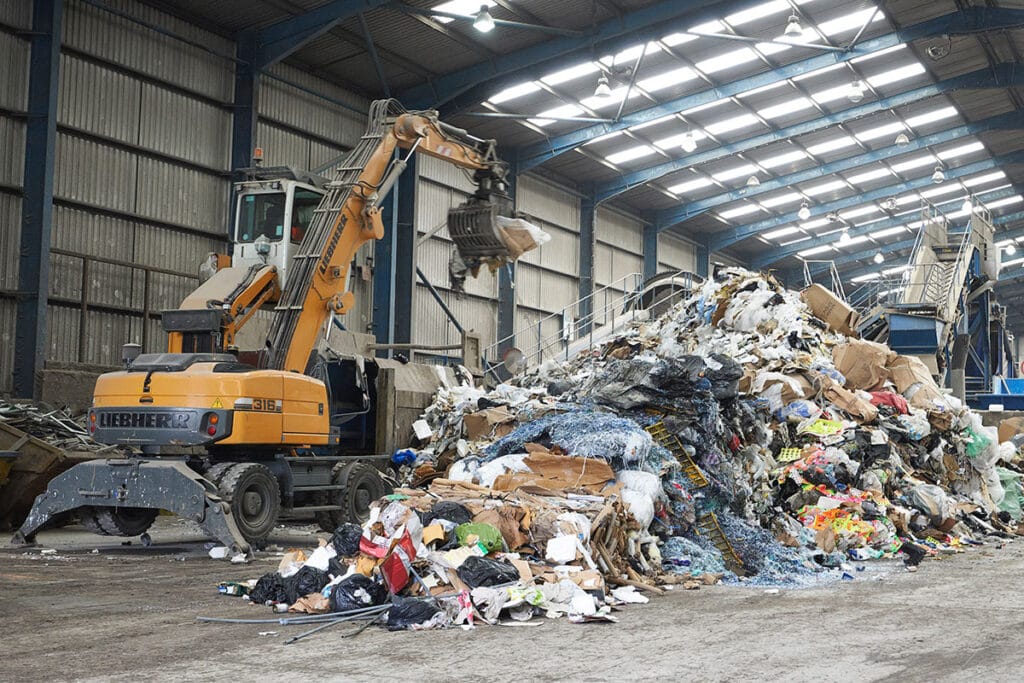
Data drives many innovations in recycling, providing companies with a better understanding of recycling behavior to help improve recycling campaigns.
Converting Waste to Energy
One of the most groundbreaking innovations in the waste industry is converting waste to energy or biofuel. Ultimately, almost every material we use will eventually become waste, and considering the exponential consumption rates all over the world, turning waste into energy is the way forward.
In this regard, machines known as digesters are used to convert different types of waste into energy using extreme pressure and heat.
Cleaner Streets
Unhygienic streets caused by overflowing waste are common in many big cities, especially urban areas that rely on routine hauling practices. Without real-time data, determining waste volumes can be tricky, considering the constant shift in waste demands and behavior.
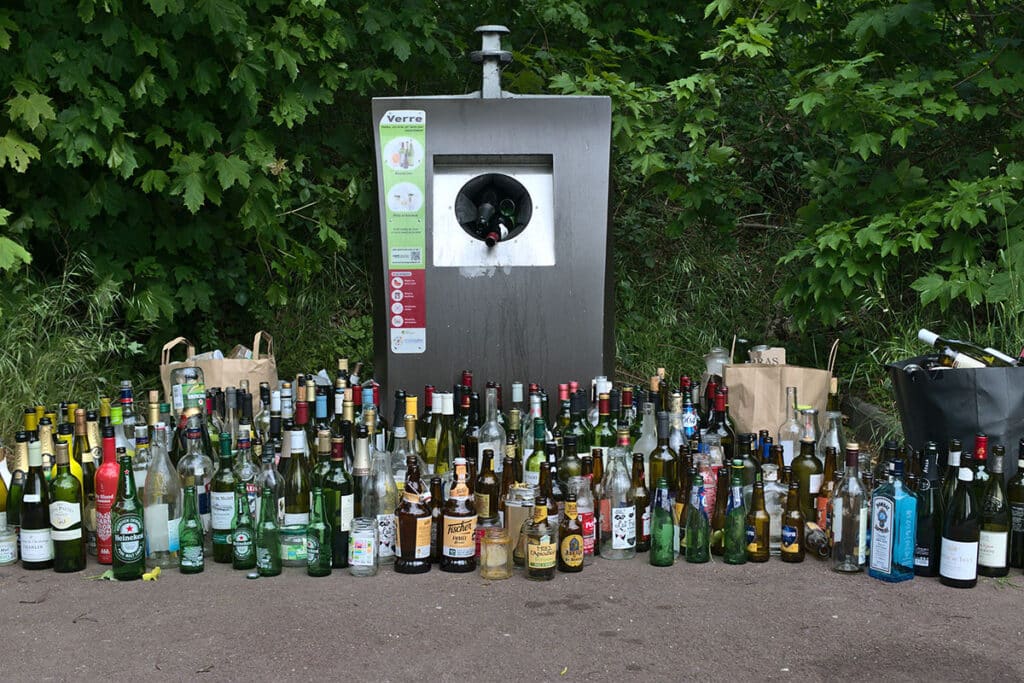
Thanks to the continuous data provided by smart waste management solutions, collection companies can prevent overflowing bins, even in the dirtiest areas, and tackle any unpredictability in waste generation patterns.
How Smart Waste Management Works
Technologically-driven waste management solutions are hinged on four main processes that provide real-time data and insights on garbage pickup routes, garbage container locations, and fill levels of garbage bins. These processes include:
Gathering Data Using Smart Bin Sensors
Powered by IoT networks, smart sensors monitor, gather, and send data on waste generation patterns to the cloud. Among other things, the information gathered by intelligent sensors includes the temperature, orientation, and fill levels of garbage containers. The data collected provide helpful insights for efficient waste management.
Improving Waste Services From Insights
Actionable insights are provided by analyzing and translating the gathered data. With this information, collectors can determine the areas prone to overflowing, the best course of action to prevent overflow (how many garbage containers to checkmate overflow), and the best routes to reduce driving distance and save fuel costs.
Optimizing Garbage Collection Routes
By providing accurate, real-time data, garbage collection companies can make more informed decisions on the most effective collection routes. This means collectors don’t have to drive along fixed routes to collect waste. Instead, insights from gathered data are used to determine dynamic routes for more cost-effective garbage collection.
Tracking Garbage Containers
Container tracking enables quick and easy garbage bin monitoring, maintenance, and theft protection. It also helps track damaged containers, allowing effective inventory management.
10 Applications of Smart Waste Management Technologies

From automatically sorting recyclables to informing waste collection companies of full garbage bins, smart waste management technologies have a wide range of applications. Here’s a rundown of some common technology-based waste management solutions.
1. Smart Waste Bins
Most people don’t have the patience to sort waste or recyclable materials themselves. And even when they do, it is riddled with error. Using artificial intelligence, smart waste bins can identify and sort waste, separating recyclable materials into separate compartments.
In addition to proper sorting, these self-sorting trash cans and advanced dumpsters compress and continuously monitor the garbage in each container to determine fullness. This increases processing efficiency, reduces resource requirements, and lowers waste management costs when sorted materials eventually get to recycling centers.
2. Ultrasonic Bin Sensor
This waste management solution uses ultrasonic fill-level sensors to detect the fullness of dumpsters or waste bins. Typically, an ultrasonic sensor or device is placed inside a trash can to measure the waste volume. It emits high-frequency sound waves into the bin and determines the fill level by how long the waves take to bounce back to the device.
Thanks to its intelligence and high reliability, an ultrasonic bin sensor automatically adapts to various waste types and changing surfaces. This means the device can give accurate information regardless of the kind of trash deposited in a container. This effectively reduces the costs associated with overflowing waste bins.
3. Image-Based Bin Sensor
Unlike ultrasonic bin sensors that measure the distance of sound waves to ascertain waste volume in containers, image-based bin sensors use cameras to determine waste volume. Using wide-angle cameras mounted inside dumpsters, these GPS-based cameras constantly provide real-time visual access and non-stop monitoring of the contents in waste containers.
In many cases, image-based bin sensors are fitted with content analyzers that identify potential contamination. This lets waste collectors and clients quickly detect when unsorted trash is dumped into a recyclable plastic container.
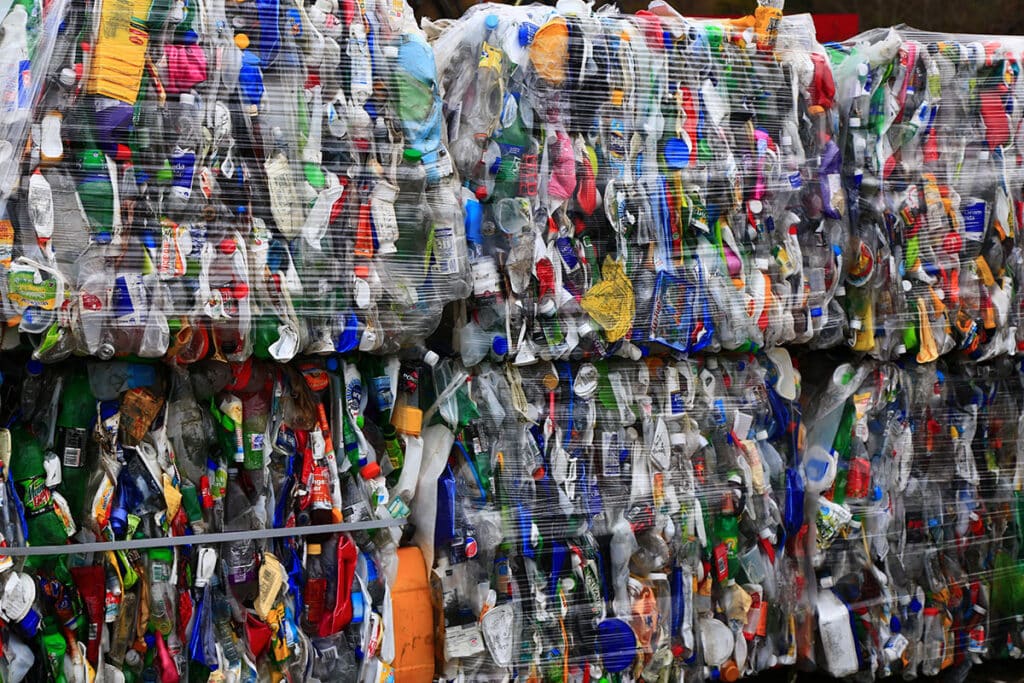
This solution enables waste management companies to know which containers require service as well as allows efficient pickup route scheduling.
4. Pneumatic Waste Pipes
Some cities save costs and resources while handling large amounts of trash by installing pneumatic waste disposal bins at strategic locations in the city. These bins connect to underground pipes through which trash travels to designated waste collection plants for hauling and sorting.
With an underground pipe system for waste management, cities can dramatically reduce fuel costs associated with traditional waste collection methods as well as significantly increase efficiency.
5. Solar-Powered Waste Compactor
A solar-powered waste compactor is a machine designed with one major goal in mind: to increase the efficiency of waste collection. The machine is equipped with a smart device that reads a container’s fill level in real-time and automatically compresses trash as it piles up. This way, a smart compactor can increase a container’s capacity by about five to eight times. This cuts back the number of trips garbage trucks make between collection sites and the dump.
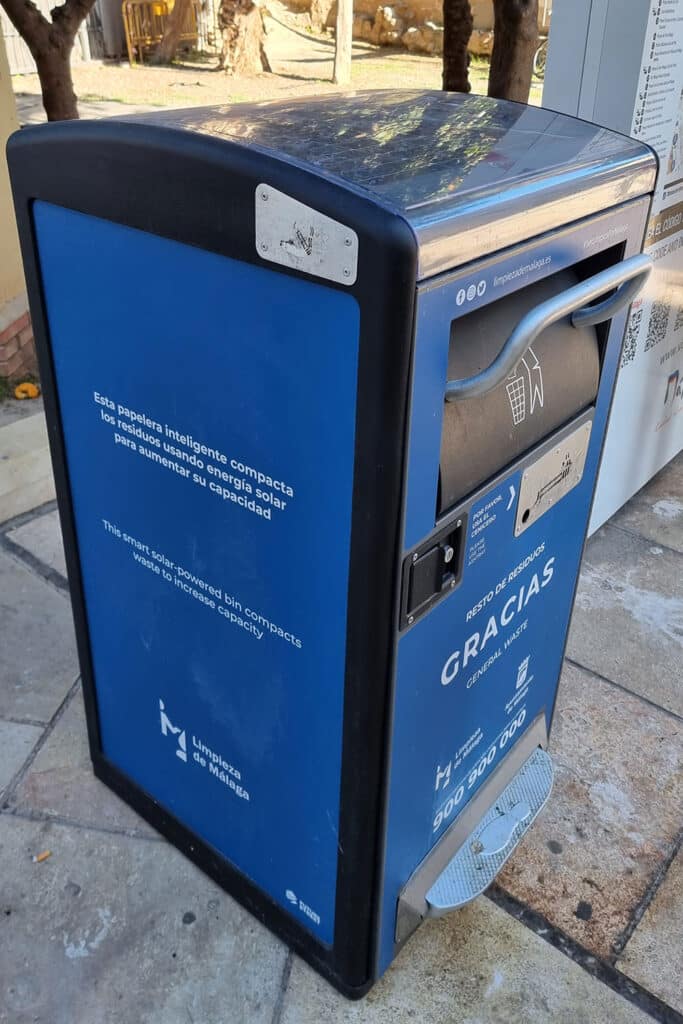
6. AI Recycling Robots
Recycling cuts down the amount of waste that would have ended up in waterways and landfills. However, manual recycling leaves a lot to be desired, considering humans are prone to error. That’s where recycling robots come into the picture.
Powered by artificial intelligence (AI), recycling robots can sort recyclable materials with high accuracy. Over time, recycling centers will save money by using AI recycling robots while increasing efficiency. This is a huge step toward creating a cleaner and greener environment.
7. Waste Level Sensors
Waste-level sensors are smart devices that can be installed on dumpsters and bins of all sizes. The sensors collect data on waste volumes, giving collection companies all the information they need to accurately predict how often to empty bins and dumpsters.
Besides reducing instances of overflowing and unhygienic environments, waste level sensors help streamline the waste collection process such that homes and businesses only dispose of their trash in the most efficient way.
8. Garbage Truck Weighing Mechanisms
This waste solution works in a similar fashion to waste-level sensors. However, unlike waste level sensors, where the devices are installed in bins, garbage truck weighing mechanisms measure and store data on waste container weights to help forecast fill levels.
Garbage trucks equipped with weighing mechanisms can accurately predict waste volume levels. This helps to reduce collection trips.
9. E-Waste Kiosks
Many forward-thinking companies now have e-waste recycling programs that encourage people to properly dispose of their old electronic devices and get reimbursed instantly in some cases. This program minimizes the health risk and environmental pollution that can happen when smartphones, tablets, and other gadgets are dumped in landfills.
Smart recycling companies collect these old electronics and recycle or refurbish them, depending on their conditions, reducing environmental impact and saving humans from breathing in cancer-producing toxins that are released when electronics are burned.
10. Recycling Apps
Several waste management companies have designed mobile apps to make recycling a lot easier for users as well as recycling centers. Apps like My Waste, RecycleNation, Gimme 5, and iRecycle are a few leading examples.
These apps let users know which materials are recyclable. They also provide information on recycling center locations and recycling rates. With this innovation, app users can properly sort their trash, reducing the tedious challenge of sorting through contaminated waste at recycling centers.
Cities Leveraging Technology for Efficient Waste Management
Several urban centers are already implementing innovative waste management strategies from smart city solution companies. Here are a few cities worldwide currently leveraging IoT technology for improved waste management.
Seattle, Washington State
Seattle is Washington State’s largest city, home to several tech giants like Amazon, Dell, and Microsoft. It is no wonder the authorities take deliberate action to make Seattle a smart city.
Some of the city’s data-driven waste management strategies include modernized waste transfer stations and recycling initiatives.
Singapore, Southeast Asia
Singapore has been at the forefront, championing the cause for sustainable urbanization strategies. The country ranks highly when it comes to using technology to improve the lives of citizens.
As part of Singapore’s smart solutions to waste management, the country uses solar-powered garbage containers equipped with fill-level sensors and compactors to increase their capacities. Singapore was among the first countries to adopt the concept of intelligent garbage bins in its waste management regime.
Amsterdam, Netherlands
Amsterdam has an audacious goal to drastically reduce carbon emissions by 95% in the next few decades.
To meet this goal, the city implements several smart technology strategies in its waste collection system. Public trash bins are equipped with fill-level sensors, and garbage trucks are fitted with weighing mechanisms. Data collected from sensors are used to create more efficient garbage pickup schedules to minimize hazardous emissions from trucks.
Seoul, South Korea
As one of the true megacities of the world, Seoul has a population of nearly 10 million inhabitants. Ordinarily, this large number of people in one city can make waste management a serious challenge, but Seoul is a smart city with a data-driven approach to waste collection.
One of its giant strides in this direction is the installation of Clean Cubes, which are essentially waste compaction bins fitted with sensors and powered by solar. This innovation alone reduces the cost of waste collection by a large percentage while keeping the streets cleaner.
San Francisco, California
With its landfill disposal at significantly low levels, San Francisco has arguably the highest recycling rates in the United States. More than 80% of waste is diverted from landfills through reduction, reuse, and recycling programs.
A large part of San Francisco’s waste management success has to do with access to data and IoT technology to provide timely insights for better recycling campaigns.
Barcelona, Spain
Barcelona has always been proactive when it comes to using technological innovations to improve urban life. In fact, it is one of the first cities to adopt a data-driven approach to urban development.
In an effort to reduce the cost of managing waste, the city installs fill-level sensors in waste bins and encourages home-based recycling.
Stockholm, Sweden
The largest biofuel plant in Sweden is located in Stockholm. Interestingly, the plant can power the entire city and only runs on waste.
Most of the waste generated in the city is converted to energy by burning them in facilities where electricity and district heating is generated. Less than 1% of the waste generated in the city is dumped in landfills.
Songdo, South Korea
Songdo International Business District (IBD) is South Korea’s smart city built with a focus on environmental sustainability. The futuristic city is considered a global model for urban planning.
By installing city-wide underground pneumatic waste pipes for trash transportation, this smart city successfully eliminated the use of garbage trucks for waste collection. The pipes move the trash to a central processing facility for automatic sorting. After sorting, some materials are recycled, and others are either burned for energy or buried.
Besides eliminating carbon emissions from garbage trucks, this innovative waste collection through underground pipes saves Songdo IBD a ton of money, as only a handful of employees are required to operate the entire system.
Smart Waste Solution Is the Future
Traditional waste management solutions based on mere assumptions are nowhere near adequate for combating modern-day waste generation. With the rapid population growth in cities, homes, businesses, and communities must shift from the age-old, inefficient waste-hauling practices.
Smart waste management using a data-driven approach offers the most effective and efficient solution to waste services based on real-time needs.
The time to take action is now. Join the futuristic communities leveraging technology to ensure their waste management regimes are sustainable and geared toward a cleaner, greener, and safer environment.
Inspired? Pin it!
